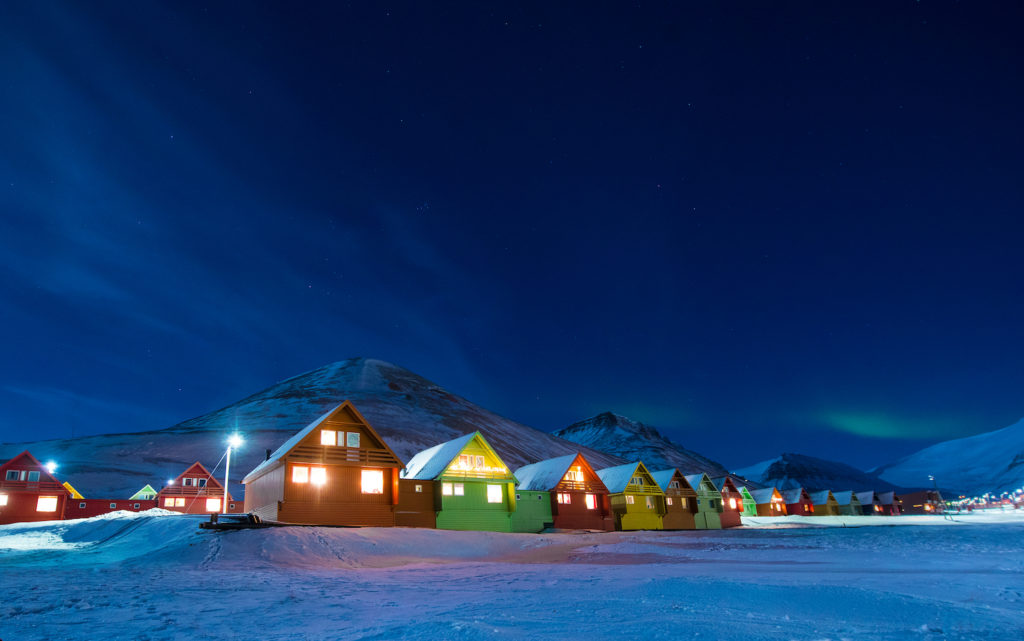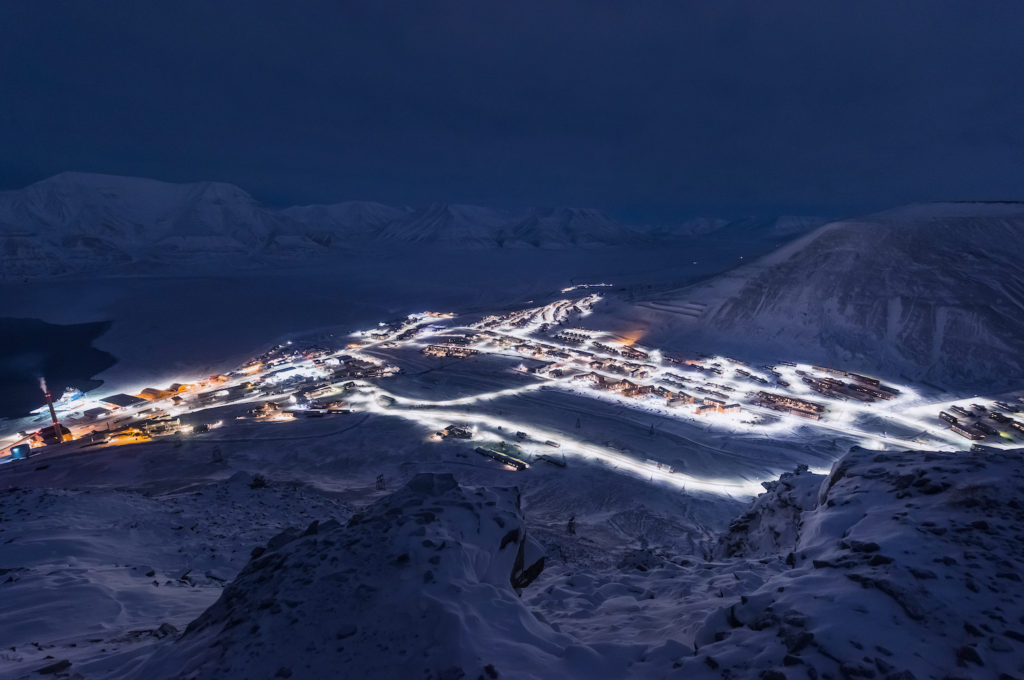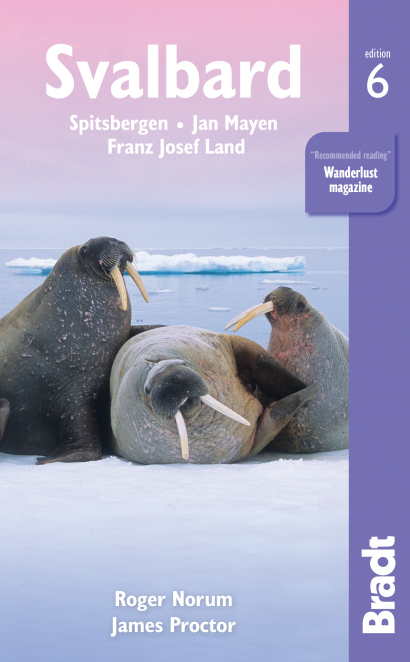Think of the Arctic Circle and your mind may wander to a land far removed from your own, one that is bitterly cold, near inhospitable and shrouded in darkness for part of the year. While the concept of round-the-clock night, or sunshine for that matter, may seem strange to many, it is possible for travellers to experience the polar night for themselves.
So, join us from the comfort of your armchair as we venture to the northernmost reaches of the globe, and are plunged into darkness on the Norwegian archipelago of Svalbard.
The onset of polar night
With Svalbard being so close to the North Pole, both polar day (midnight sun) and polar night are accordingly extreme, and preside as one of the defining experiences of travelling to these high latitudes in the right seasons.
The polar night is extant in Longyearbyen, Svalbard’s main settlement (pictured below), from about 28 October to 14 February. During this period, the sun never once rises above the horizon. During the first and last parts of the polar night, however, there is a bright dawn at midday, which becomes exponentially shorter every day in November and exponentially longer and brighter each day from early January onwards.
© ginger_polina_bublik, Shutterstock © ginger_polina_bublik, Shutterstock
During the central period – from around 10 December to early January – it will be truly black night around the clock, with only a very faint dark blueish touch above the southern horizon around midday (presuming the weather is clear).
And yet even in the dead middle of the polar night, visibility can be surprisingly good in bright weather – thanks to the clear Arctic air and the reflecting white snow on much of the terrain, which together facilitates shorter hiking excursions by starlight. It is quite surprising what can be seen at night, once one’s eyes have adapted to it. The moon, too, can be rather special – if it is close to full, it stays above the horizon most of the day and casts a magic and surprisingly strong white light on everything.
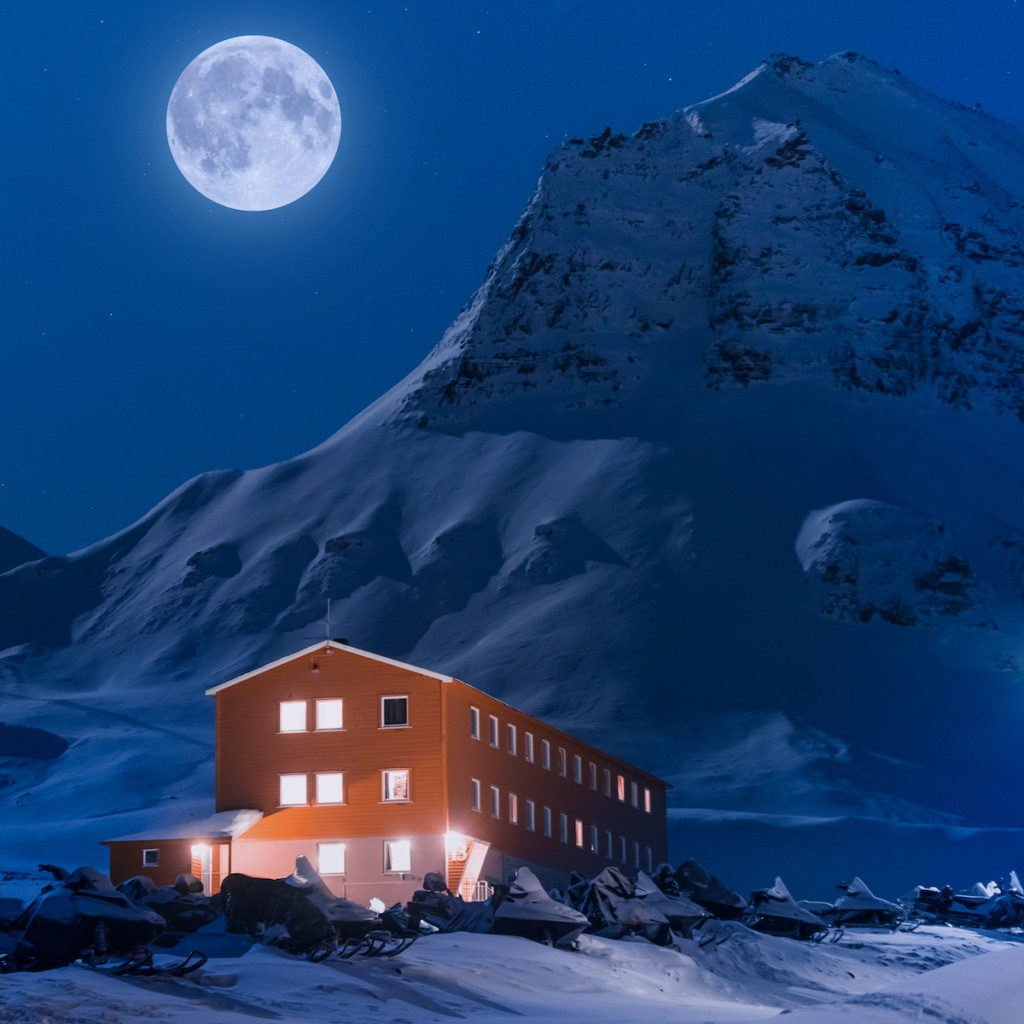
The round-the-clock dark sky is also perfect for catching the northern lights. You may catch sight of the aurora with clear weather even at midday, which is hardly possible in more southerly regions. Equally spectacular light can come from the luminescent clouds in the high atmosphere, which are effectively restricted to high polar regions.
Travel during the polar night
As practically everything is closed over the Christmas holidays in Longyearbyen – including accommodation and the shops – the best period for experiencing true polar night is over New Year. Plan in good time and aim to spend at least a week in order to experience the different climatic variations and to increase the chance of having periods of good weather.
In this way, daily programmes will have to be planned on a day-to-day basis depending on natural conditions – you may be kept in by a snowstorm or, if you’re lucky, enjoy some wonderful tours under the night sky with your armed guide.Today a wide range of aurora-related activities can be experienced in Svalbard, from a snowmobile safari to an evening at a camp with dinner.
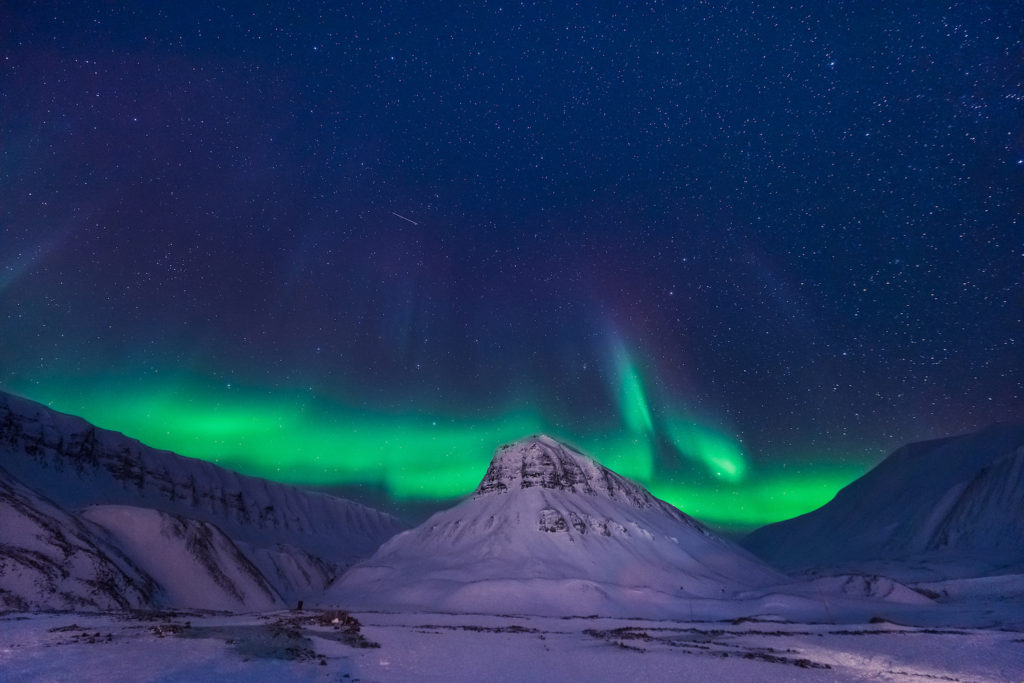
Temperature-wise, anything can be expected from below –25°C to above 0°C, with the most important factor affecting the temperature being the wind. Nevertheless, mass tourism has yet to discover the polar night fully, and the New Year is a pleasantly quiet time for experiencing this unique period.
The eventual break of dawn
Mathematically speaking, the polar night should end in Longyearbyen in mid-February. But due to high mountains to the south of the town, the actual rays of the sun do not reach much of the settlement before March. As a result, the return of the sun is celebrated here as one of the main annual festivities – Soldagen, or ‘day of the sun’ – taking place over a whole week around 8 March. By contrast, this same event happens in Tromsø a good month and a half earlier, on 21 January.
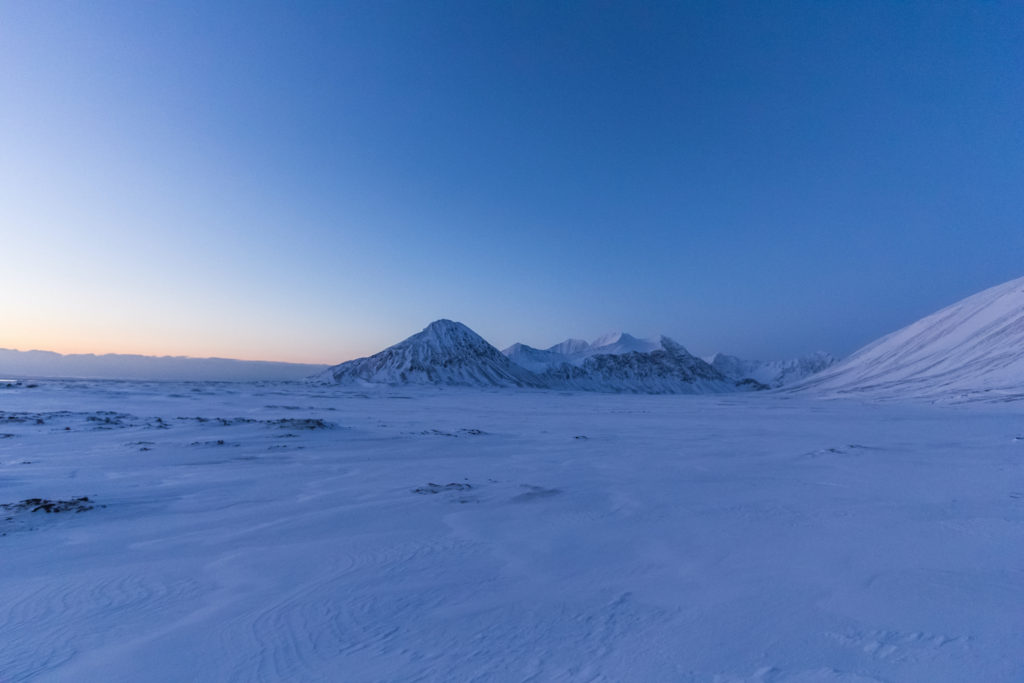
This hearty welcome of the sun should not in any way suggest that locals do not like the dark period. The beginning, with shrinking dawn and very little snow, may bring with it moments of depression, but the true permanent night around Christmas and New Year’s Eve casts a fascinating spell. Many locals prefer the polar night to the permanent light of the summer, maintaining that winter is the cosiest and most social period of the year.
More information
Eager to experience polar night for yourself? Take a look at our guide:
